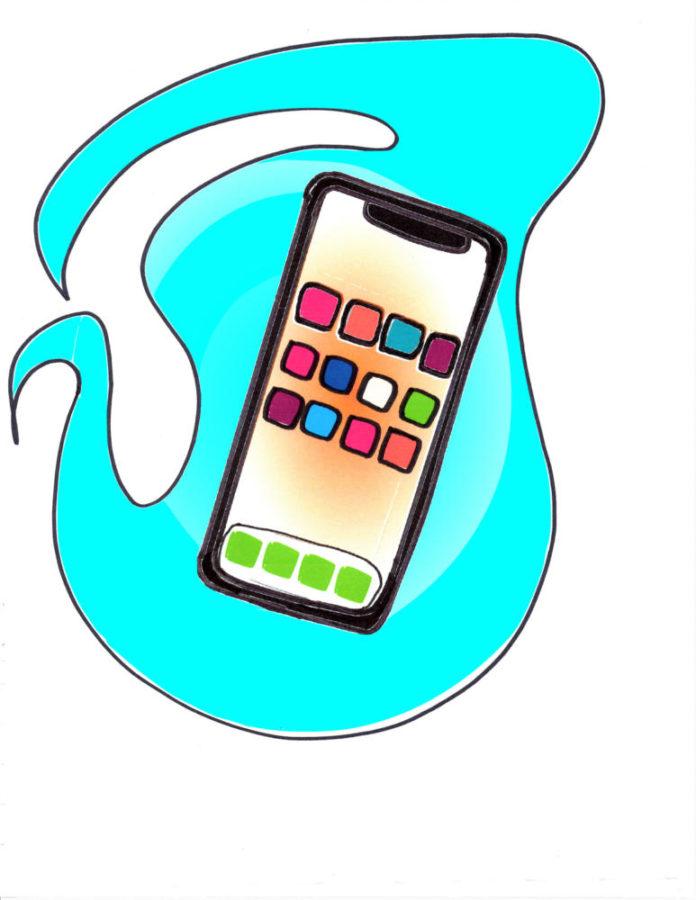A decade before Apple released the first iPhone, the hottest new technology included the Tamagotchi virtual pocket pet, Motorola’s StarTAC — one of the first widely popular cell phones — and the trusty mp3 file.
When the iPhone was introduced 10 years ago it shook every aspect of the technology world — it launched the touch revolution, changed the way we communicate, put the internet in our pockets and made everyone a photographer.
But now it seems Apple is no longer the face of progress. The new iPhone X may be a beautiful piece of hardware, but it employs technologies like Qi wireless charging and facial recognition that are already industry standard in phones like the Samsung Galaxy Note 8 and the LG V30, both of which are cheaper than the iPhone X.
It’s not because Apple’s getting lazy. There are structural aspects of the tech industry that yield this bland update. Smaller tech companies entering the market traditionally provided more radical innovation. Now, giants such as Apple are stifling smaller companies while simultaneously changing course and focusing more on social media development.
Prior to the late ‘90s the industry was a lot emptier. The era soon became a pinnacle of early technological innovation as industries created by electronics and software innovation grew the fastest of any industry group during the late ‘90s. From the Ph.D. students at Stanford who founded Google to college dropouts in a garage who founded Apple, people were coming out of nowhere and breaking new ground.
But today four companies dominate the country’s tech market, a supergroup known as GAFA in France. Google, Apple, Facebook and Amazon are involved in nearly every aspect of daily life, and their dominance is evident every time you visit the internet.
It’s not that ambitious companies aren’t trying to shake up the market — they’re just failing much more often. Though it’s still a phenomenon not understood in its entirety, the theory is that entering companies are unable to find the footing to prosper in a concentrated market held by the GAFA giants. As the market stabilizes, larger companies face less risk of being overthrown by new industry invaders.
The problem is these larger, longer-lived companies that hold a majority of the market don’t invest in radical new technology as much as newer entering companies do. They don’t have to capture anyone’s attention or gamble with uncertainties — they already have the market.
In Apple’s case, we’ve slowed from a dizzying innovative dance to a steadier September shuffle.
But regardless of the lack of “wow factor,” analysts predict strong sales for the iPhone X. This phone will be everywhere in a couple of months. Our desires for a phone as consumers are deeper than being impressed by a spec sheet.
While Android phones are known to surpass iPhones in technical specifications, the iPhone offers a more abstract asset — that feeling of being connected. This is one of the reasons that Apple has developed a firm presence in youth culture.
Apps such as iMessage and FaceTime are cultural standards of communication for those of us under 30. While they aren’t “better” than Android services, they do offer inclusion to a norm, and a user-friendly one at that. What we crave more than technical specifications is the feeling of being connected and — for better or worse — less different.
A highlight of the new iPhone’s launch showed Craig Federighi, Apple’s senior vice president of software engineering, using the phone’s new depth-sensing camera to put a 3D Snapchat filter on his face. Furthermore, the portrait mode found on the iPhone 7 Plus will now be on the iPhone X, catering to selfie takers who want more Instagram-worthy pictures than ever.
So much of the new tech on the iPhone X is focused around Snapchat, emojis and other ways to make social media more engaging. With catering to social media integration in the forefront, Apple no longer feels pressure to develop a truly innovative, physical phone.
And when it comes to profit, Apple isn’t misguided in this shift. It’s what consumers want, and it’s where the money is — Snapchat, a company that started without a profit model, is now worth about as much as retail giant Target.
We now spend on average almost an hour a day on Facebook and half an hour on Snapchat. But social media has changed the way we think throughout the entirety of our day, with more and more of our spare moments being spent on our phones, in more divided, comfortable virtual spaces. At 95 percent, the vast majority of the country already has a smartphone, so the question isn’t how to convince people to buy one — it’s how to keep them on it longer.
Social media companies want to become a bigger part of our thought process for now. Infinite, instantaneous access to information as well as virtual social lives are the goal, but the profit that would result is almost unimaginable. The threat this may present to our privacy and way of life is still looming, but it’s clear we are already well on our way.
The iPhone X’s slogan, “the future of the smartphone,” is a telling tagline. If the future is what we saw this September — a tech giant that was once a beacon of innovation putting out little more than animated emojis and sharper selfies — then it’s clear something about our trajectory has changed.
We’re close to a post-innovative age, one in which society’s obsession with social media stifles true innovation. And if we are to move forward with intention in a world more connected than we could ever imagine, we should demand better from our technology.
Levko primarily writes about environmental issues, cultural topics and alternative lifestyles. Write to Levko at ldk14@pitt.edu.


